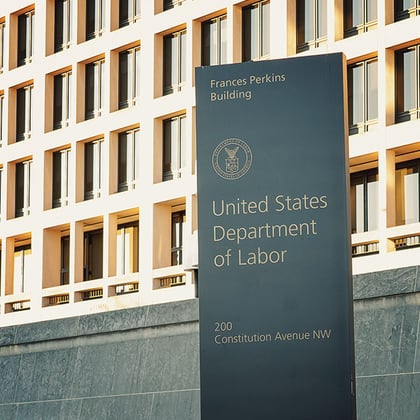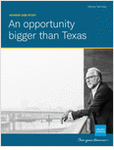What You Need to Know
- About 13.5% of U.S. financial professionals are independent contractors.
- The U.S. Department of Labor wants to make the independent contractor definition tougher than the current federal definition but looser than the definition California uses.
- Some financial services sector commenters predict the proposal would make it easy for independent contractor financial professionals to continue to operate as independent contractors.
- Others fear the proposed independence test conflicts with financial services regulatory reality.
A North Carolina registered investment advisor told the U.S. Department of Labor that its effort to narrow the definition of the term “independent contractor” is bad for RIA firms.
Laird Hepburn, a partner with an RIA firm in Apex, North Carolina, noted that state and federal law requires him to supervise the firm’s investment advisor representatives, who are independent contractors. Hepburn worries that, under the proposed DOL independent contractor definition update, supervising the IARs will turn them into employees.
“Uncertainty surrounding the status of our IARs hurts my business,” he wrote, in a comment posted on the federal government’s Regulations.gov website. “It decreases the value of the business that I have built and takes resources away from the core work of helping clients with financial planning.”
Other advisors told the Labor Department that they think its proposed “economic reality test” should help financial professionals who want to continue to be independent contractors maintain their status.
What It Means
If you operate as an independent contractor, you might have trouble continuing to do so.
Similarly, any clients who operate as independent contractors might face their own fights to avoid turning into employees.
Independent Contractors vs. Employees
The federal Fair Labor Standards Act, or FLSA, and other federal labor laws provide many provisions, such as minimum wage laws, for employees. Employers typically report their earnings on W-2 forms.
Independent contractors usually get their payment reports on Form 1099.
Although independent contractors may have less job security and less access to employer-paid benefits than employees, they may have an easier time deducting expenses from taxable income.
They may also have more control over the assignments they accept and how they spend their time.
The Numbers
About 13.5% of financial professionals — including 8.5% of securities reps, 11.4% of financial advisors and 17.1% of insurance agents — operate as independent contractors, according to 2017 U.S. Bureau of Labor Statistics data presented in an independent contractor proposal comment submitted by the Financial Services Institute.
The institute also provided an analysis, prepared by NERA Economic Consulting, showing that, in 2017, the percentage of all workers at 17 major financial services firms who were independent contractors ranged from 21.7% at Guardian, up to 97.8% at Primerica.
The History
Labor unions and some workers argue that Uber, meal delivery services and other “gig economy” companies hurt workers by forcing some people who would prefer to be full-time, year-round employees to be independent contractors.
Workers in other fields where independent contractors are common, such as the television and film production industry, have argued that, for them, the benefits of self-employment outweigh the disadvantages.
In 2019, California adopted a narrow definition of an independent contractor, based on an “ABC test” described in a court ruling. Under the ABC test definition, a worker can be classified as an independent contractor only if the worker is free from direction and control; the service is out the employer’s usual scope of business; and the individual is in a trade or profession related to the service being provided.
In January 2021, when former President Donald Trump was still in office, the U.S. Labor Department completed work on a federal independent contractor rule update that would have made it easier to classify workers as independent contracts, based mainly on factors such as the nature of the worker’s work; the worker’s opportunity for profit or loss; the amount of skill required for the work; and how long the relationship between the worker and the employer lasts.
After Joe Biden became president, the Labor Department withdrew the Trump-era regulation and released the definition update draft that included the economic reality test.
“An employee, as distinguished from a person who is engaged in a business of his or her own, is one who, as a matter of economic reality, follows the usual path of an employee and is dependent on the business which he or she serves,” according to a summary posted by the department’s Wage and Hour Division. “The employer-employee relationship under the FLSA is tested by ‘economic reality’ rather than ‘technical concepts.’”
Officials noted that many factors, such as the permanency of the relationship, the worker’s opportunities for profit and loss, and the nature and degree of control by the principal help determine whether a worker is an employee or an independent contractor.
In March, a federal judge in Texas vacated the Labor Department’s move to withdraw the independent contractor regulations.
The department released a new proposed rule in October. The department has received about 54,400 comments on the draft rule.
The Supportive Comments
Some commenters have argued that requiring employers to classify more workers as employees could increase the employees’ access to employee benefits.
Krystyn Reid, an Oklahoma resident, wrote that employers are “misclassifying workers as gig workers to avoid their responsibilities on everything from employer-sponsored health insurance to paying employer contributions toward Social Security.”
“If someone works for you, you should be required to pay into [Social Security], life insurance, and medical coverage, Reid said.
Other organizations and individuals indicated that the DOL proposal should be compatible with financial professionals staying independent.
Michelle Bryan Oroschakoff, chief legal officer at LPL, predicted that the DOL proposal would not result in the unintentional classification of independent financial professionals as employees.












 Copyright © 2024 ALM Global, LLC. All Rights Reserved.
Copyright © 2024 ALM Global, LLC. All Rights Reserved.